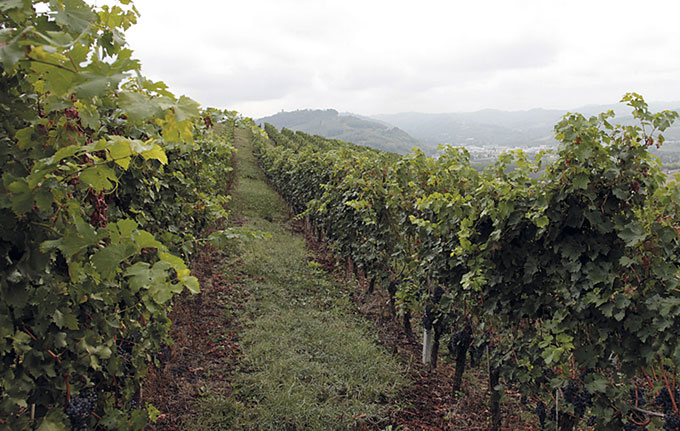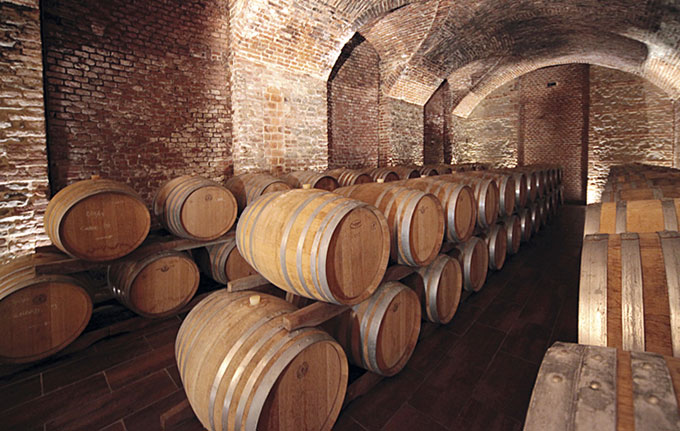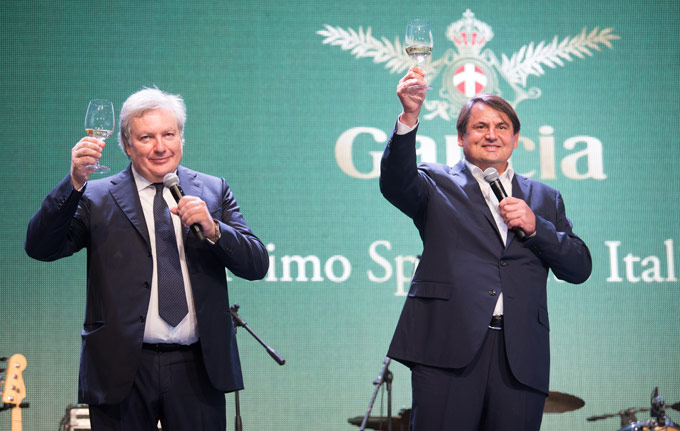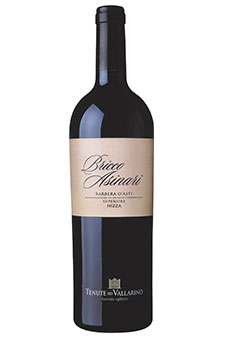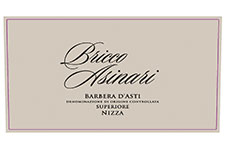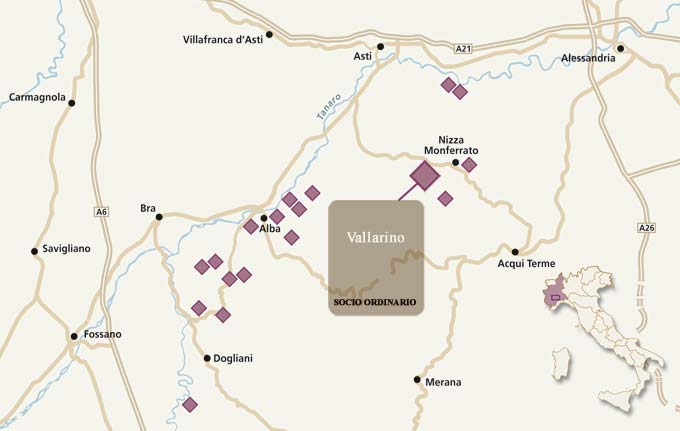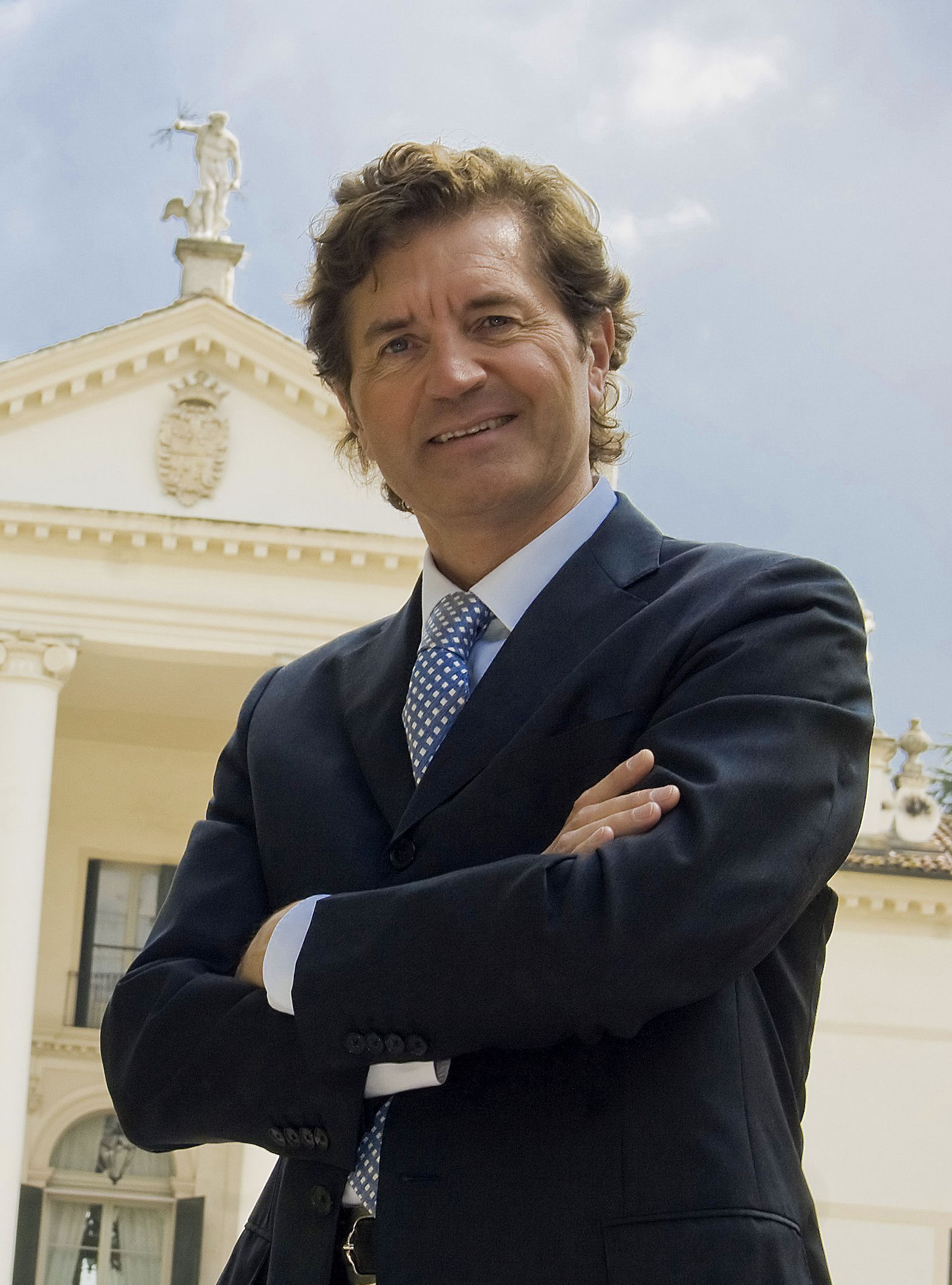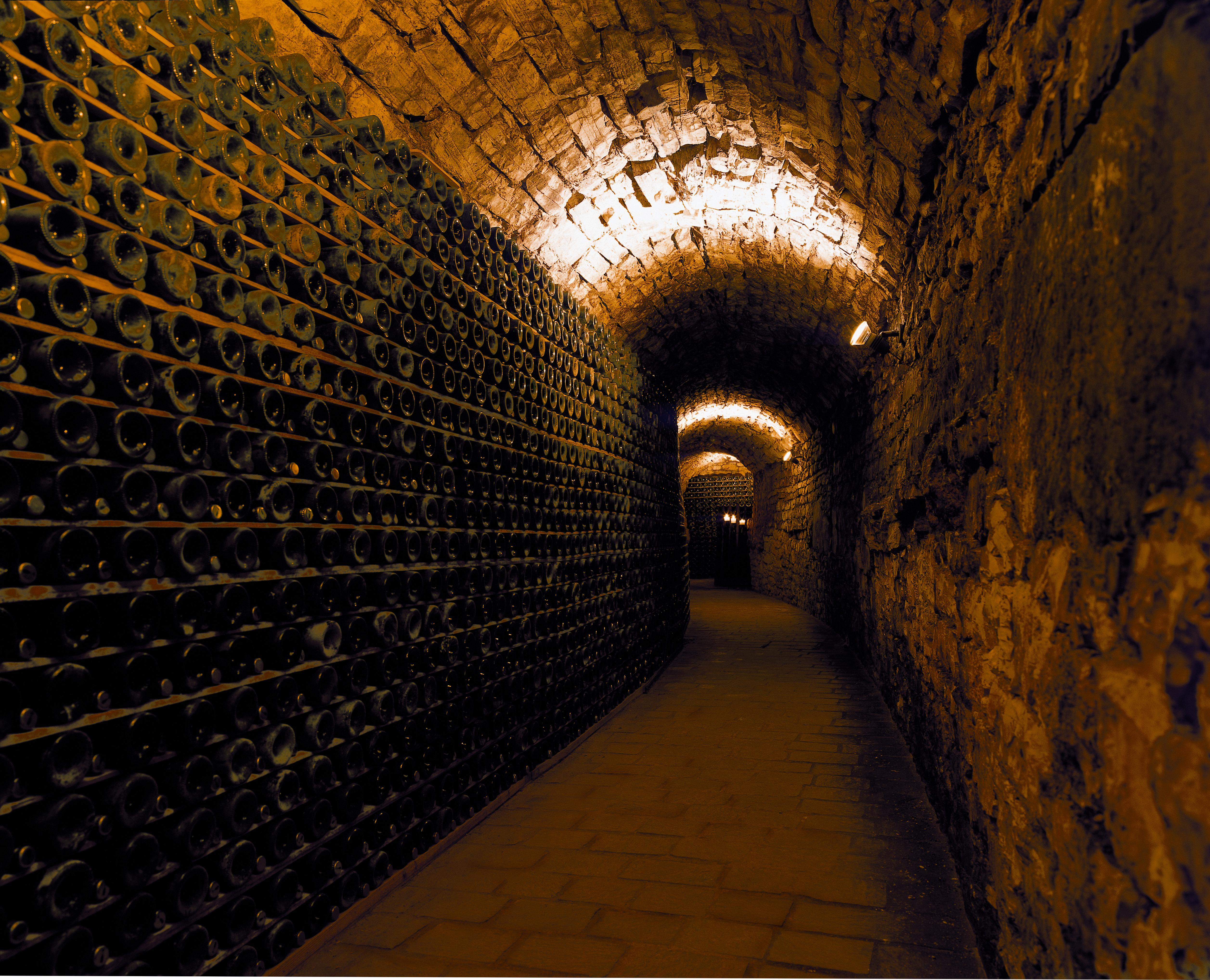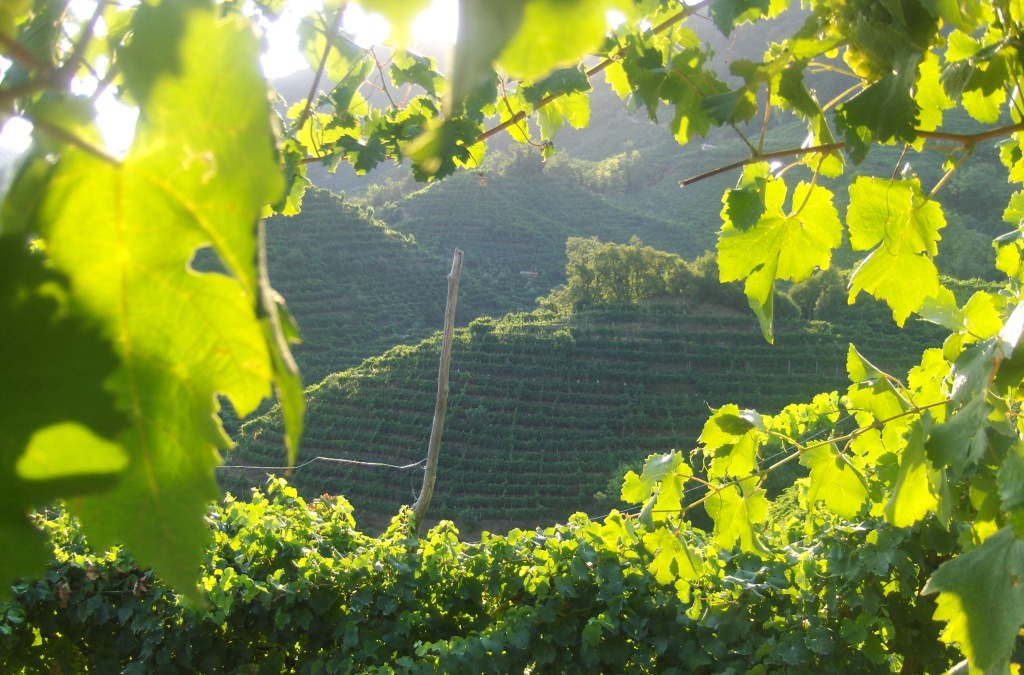
Rivera
Rivera
Biography

It was in the first years of the 20th century when Giuseppe de Corato decided to purchase the vast estate named Rivera in the Andria plain, one of the finest viticultural areas of northern Apulia. The vine, in fact, has been cultivated there since the days of Magna Grecia, and centuries of selection have identified native grape varieties of high potential, first and foremost Nero di Troia. But this was not de Corato’s sole impulse and inspiration: Andria and its surroundings have a fascination which goes beyond agriculture, to the point that, in the 13th century, it had bewitched even Frederic II of Swabia, the holy Roman Emperor, called for this reason “Puer Apuliae”; it is to him that we owe the construction of the Castel del Monte castle, the mysterious manor, an octagonal edifice of blonde stone which UNESCO has classified as part of the patrimony of humanity and which marks with its enigmatic presence the entire territory. Here, in the 1950’s, Sebastiano de Corato, the son of Giuseppe, founded the Rivera firm on the land purchased by his grandfather: he replanted the vineyards, restructured the old cellars, and created a bottling line. The success of the operation made Rivera a reference point for the oenology of northern Apulia. And precisely for this position of leadership, in the following years, when Sebastiano de Corato was joined by his son Carlo, the house was able to innovate in a way which rendered the viticulture and wine of the region less provincial: noble international grape varieties were planted in the vineyards, both Sauvignon and Chardonnay. Only long and patient work was able to verify the adaptability of these grapes to the local soil and climate, but the final effect was to enrich the viticultural possibilities of the region. Today Rivera gives greater emphasis to native grape varieties, and for this reason has re-launched Nero di Troia, for too long a time a greatly undervalued variety. The two most representative wines from the grape are red wines, both Castel del Monte DOC efforts: Il Falcone represents part of the story of the house, a Riserva wine produced ever since 1950, a blend of Montepulciano and Nero di Troia which reflects the local tradition of that period in time. Puer Apuliae, instead, a relatively recent wine, was first made in 2000 and is a pioneering effort in the creation of high level pure Nero di Troia. It is with wines of this type, produced from close to 240 acres of proprietary vineyards, that Carlo de Corato, now supported by his son Sebastiano who has joined him in the firm, has prepared himself for the challenges of the global markets of the third millennium.

Rocche dei Manzoni
Rocche dei Manzoni
Biography

“If you like wine, buy a vineyard” recites an old adage. Valentino Migliorini, who in 1974 was a restaurateur in Caorso with a Michelin star but driven by a passion for Barolo, purchased on old 18th century estate on a hill in Monforte d’Alba in a zone called Manzoni Soprani, surrounded by a vineyard in an excellent position. That vineyard changed his life. He and his wife Iolanda soon moved to Monforte and there created an estate with 125 acres of proprietary vineyards, planted with densities of 4,500 vines per hectare, a state of the art cellar with advanced technology, traditional casks, and thousands of barriques. The potential production capacity of Podere Rocche dei Manzoni is 250,000 bottles annually, but the pride of the house is not in the cellar equipment but in the five crus from which Migliorini obtains, solely in better vintages, the grapes for his prestigious Barolo selections: Vigna d’la Roul, located around the cellars, the historic cru Cappella di Santo Stefano at Perno, Madonna Assunta La Villa in Castelletto, Ciabot d’August in the Ginestra sub-zone of Monforte, and Pianpolvere Soprano. The fact that all of the vineyards are situated in the same township of Monforte d’Alba is a deeply pondered, and by no means casual, choice: profoundly convinced of the infinite possibilities of this part of Barolo, Migliorini has always wanted his wines to be the maximum expression of their point of origin. In addition to Barolo, Migliorini limited himself, in his early years, to the production of the other traditional wines of the Langhe zone, Dolcetto and Barbera d’Alba, but he, with an innovative spirit, soon began an era of experimentation: the first Nebbiolo-Barbera blend of the zone was his Bricco Manzoni, first produced in 1976. In 1978 appeared the Valentino Brut Riserva Elena, a sparkling wine from Chardonnay and Pinot Noir grapes, while, at the same time, the first barriques began to appear in the cellars, a decision which was eventually to mark the wines of the estate, all aged in small oak barrels since the 1982 vintage. The personality which Chardonnay and Pinot Nero express at Monforte d’Alba was shown in 1988 with Angelica and in 1989 with Pinònero, and the character of a blend of Nebbiolo, Cabernet Sauvignon, Merlot, and Pinot Noir was discovered in 1996 with first bottles of Quatr Nas. In 1993 it was even demonstrated that it was possible to produce in the Langhe area a dessert wine with noble rot from Sauvignon and Sémillon. Short pruning, crop-thinning, and low yields (little more than two tons per acre) are a guarantee of quality.

Scacciadiavoli
Scacciadiavoli
Biography

Scacciadiavoli is one of the oldest estates in the territory of Montefalco. The name derives from an old hamlet near the estate’s property, once inhabited by an exorcist (who “chased devils”, the meaning of the Italian name). The purchase of the property by Amilcare Pambuffetti, grandfather of current owners Amilcare junior, Francesco, and Carlo, dates from the middle of the last century. The cellar, built during the second half of the 19th century, is rationally organized and equipped with the latest modern technology; it represents a rare example of agro-industrial architecture of that period. The estate consists of 325 total acres, 88 of which are planted to vines, with a total annual production which will reach 200,000 bottles when all of the vineyards are in full production. The recently completed replanting and extension of the vineyard surface has been done with vine density of 5,000 vines per hectare, a decision which testifies to the commitment and intelligence with which excellence in quality has been placed as an essential objective. “Sola Fides” is the motto engraved on the frontispiece of the cellar and figures on the labels of the wines as well, a brief statement of the estate’s operating philosophy. It is a sentiment which characterizes rural society and expresses the desire to create and accomplish. It is the conviction that the soil rewards those who work it on a daily basis with products of true personality and quality. Scacciadiavoli firmly believes in the territory of Montefalco. The wines which are produced are the typical ones of the zone: Montefalco Rosso DOC and Grechetto Umbria IGT, plus the thoroughbreds of the cellar: first, the Montefalco Sagrantino DOCG which, in the dry version, ages fifteen months in small French oak barrels, six months in stainless steel tanks, and nine months in bottle. Intensely aromatic with notes of red fruit, blueberries, and blackberries, full and warm on the palate, balanced in its acidity and tannins, it is long and sustained right through to a finish and aftertaste which echo the initial sensations. A red wine for red meat, game, and cheese with some age. Second, the Montefalco Sagrantino Passito DOCG, 100% Sagrantino, made from grapes dried on straw mats and fermented in December or January after the harvest. A dense ruby red with an intriguing nose of blackberries, red berry fruit, and coffee, it is sweet, supple, and never cloying. A wine to sip, a wine for meditation.

Scubla
Scubla
Biography

Roberto Scubla’s estate was founded in 1991 at Ipplis di Premariacco in the Colli Orientali of Friuli appellation. The founder decided to add new vineyards to the older ones which already existed, reaching an overall total of thirty acres of vines. The vineyards are all situated on the slopes of a sunny, rolling hillside in the southern part of the Colli Orientali DOC, an area of wines of great harmony and fragrance. It is the soil, together with technology and human experience and know-how which characterizes the zone and its wines. It consists almost entire of a marl known locally as “ponca”, rich in micro-elements and salts, which easily flakes under the influence of sun and rain. Thanks to this marl, the grapes can express all that they have, their varietal character, their rich aromas, and their body. The limited production enables the estate to give maximum attention and care to each and every phase of operations, from the harvest to the fermentation; in this way Scubla has managed to reach his objective of offering the public quality in all of his wines, both the regular bottlings to the more prestigious offerings, both produced with the same commitment and dedication. Three Scubla wines are the most famous, a red and two whites, each of great personality. The Rosso Scuro, a Colli Orientali DOC which blends Merlot and Cabernet Sauvignon, is an intense ruby red with aromas of red fruit and spice, full and ample in body, long and velvety; it is excellent with important meat dishes and game. The Bianco Pomedes, also an appellation wine, blends Pinot Blanc with smaller percentages of Tocai Friulano and Riesling, and is fermented and aged in oak. A complex and fragrant wine. A straw yellow with golden highlights, it is ample on the nose, fruity and aromatic, tasty and structured in flavor and fine with fish. The Verduzzo Friulano Cratis, Colli Orientali DOC, perhaps the most unusual wine of the estate, is made from grapes dried on straw mats, pressed and then fermented in French oak barriques. Amber in color, sweet and concentrated with notes of dried apricots, figs, nuts, and citrus fruit, it is suave and inviting on the palate and very long. It goes well with blue cheese, even if it is an excellent wine for sipping and meditation as well.

Sergio Mottura
Sergio Mottura
Biography

The Mottura estate, owned by the Mottura family since 1933, extends over 325 total acres in an area rich in natural resources located between the hillsides and clay erosion furrows of Civitella d’Agliano and the plain of Umbria, watered by the Tiber river not far from the city of Orvieto. The viticultural potential of the zone was already noted in 1292, when the cadastral registers of Orvieto defined it is one of the finest for the production of the famed wine of the city. The process of modernization and transformation of the estate began in the 1960’s, sharecropping giving way to the use of salaried manpower, research intensifying in order to identify the plots to be cultivated with grapes capable of giving products of real quality. Operating with this philosophy, the primary objective was to give special attention to local grape varieties, particularly Grechetto, and to work with the methods and criteria of biological agriculture, as has been done for the last fourteen years.
There are other varieties, however, cultivated in addition to Grechetto, three clones of which have been identified on the estate, grapes with rich, heady, and persistent aromas, vigorous and ample in body: Procanico, a variety with well spaced berries on its bunches, very resistant to mould, golden in color, and low-yielding; Verdello, with a compact bunch of dark green color, excellent acidity, and an elegant fragrance; Drupeggio, floral in aroma and velvety in body; Chardonnay, used for a classic sparkling wine; Merlot, Montepulciano, and Pinot Noir, red grapes which often find here ideal conditions for important wines. It is the wines produced with these varieties which have attained the widest recognition both nationally and internationally. Particularly the two finest crus, both 100% Grechetto, the Latour a Civitella, golden yellow in color, elegant in aromatic impact, complex with notes of white fruit, citrus fruit, butter, and hazelnuts, full-bodied, soft, and pleasurably fresh with fruit and vanilla on the finish. And Poggio della Costa, very pleasurable on the nose, ample and fruity both in aroma and on the palate, fresh and persistent, long and lightly tannic on the close.

Spadafora
Spadafora
Biography

The Spadafora estate has been owned by the Spadafora princes for generations. The founder was Don Pietro dei Principi di Spadafora, who had inherited it from his uncle Michele de Stefani, a cultivator who raised race horses. The origins of the family go back to the 18th century. The estate suffered significant damage during the 1968 earthquake, but Don Pietro invested important resources in the reconstruction and improvement of the property, giving new emphasis on native Sicilian grapes and importing international varieties to improve the wines. The current owner is Fancesco Spadafora, son of Don Pietro, who directs the cultivation of 250 acres of vines. The marketing of bottled wine began in 1993 when Francesco Spadafora, who had just taken over the direction of the house, decided to ferment his own grapes and propose them with his own labels. Located in the township of Monreale, the estate extends over 450 overall acres, 250 planted to vines, and currently produces 300,000 reasonably priced bottles annually, some DOC, others IGT. The house philosophy is based on the utilization solely of grapes cultivated directly on the estate, which directly supervises every aspect of the production cycle with constant attention to quality based on modern viticultural criteria in the vineyards and fermentation practices in the cellars. The fruits of this rigorous philosophy were soon evident in wines of excellent quality. Today Spadafora produces one of Italy’s finest Syrahs, Sole dei Padri, from grapes cultivated in the highest part of the property, a vineyard with a north-northwestern exposure. It is a ripe and concentrated wine which needs years of time and patience to reveal all of its subtleties. A dense ruby red, elegant and persistent in aroma with notes of red and black berry fruit, blueberries and blackberries, vanilla, and tobacco, it is of important structure and roundness, rich and ample, deep, silky, and with a formidable momentum on the palate, a harmonic balance between sweet tannins and freshness, and a long finish. Excellent with red meat and full-flavored cheese.

Tedeschi
Tedeschi
Biography

Tedeschi is one of the historic names of the classic part of the Valpolicella. Documents recently found in the family archives demonstrate that the first acquisition of vineyards goes all the way back to 1630. The winery is directed by Renzo Tedeschi along with his children Antonietta, Sabrina, and Riccardo, who continue the work of bringing out all of the character of the terroir begun four centuries ago by their ancestors, producing wines of unmistakable personality which combine tradition and innovation. Since the very beginning the Tedeschi family has aimed for wines with body, structure, and fragrance, balanced and elegant. The working philosophy is based on innovation to obtain higher quality, on the one hand, and absolute respect for tradition on the other, and explains new developments in recent years. In April of 2006 Tedeschi purchased 210 acres of land (a Maternigo property) in the Valpolicella appellation, located between Tregnago and Mezzane di Sotto. A project to plant 75 acres of vineyards has been approved. The planting of the Le Pontare vineyard , situated in the township of Sant’Ambrogio di Valpolicella just a few miles form the cellars, is well under way: 12.5 acres have already been planted and the rest were to be finished by the end of 2008. The new grape-drying facility in Pedemonte, with a capacity of 350 tons of grapes, was finished in 2007. Fermenting facilities have been moved and modernized, and amplified as well. The former fermenting space has been restructured and transformed into an aging cellar with 47 new 1,000 to 5,000 liter casks coopered from Slavonian oak, a total aging capacity of 94,000 liters which has been added to the casks already in the cellars and purchased over the past decade. As far as the wines are concerned, the most important are made from such native varieties as Corvina, Corvinone, Rondinella, and Oseleta, along with Molinara, Dindarella, and Negrara. Among the product lines are “Fabriseria”, limited-quantity wines produced only in special vintages, “Capitel”, which include the historic crus of the house, and “I Classici”, well made and very reasonable in price. The standard-bearer of the winery is the Amarone della Valpolicella Classico Monte Olmi, winner of many prizes and much recognition. An intense ruby red, it shows an expressive nose of cherries, raspberries, and currants, and an elegant body, powerful and long. A wine for game or cheese.

Tenuta Sette Ponti
Tenuta Sette Ponti
Biography

Antonio Moretti, a successful entrepreneur in the field of fashion, has succeeded in putting the province of Arezzo on the map for wine critics of the world. Before him, Arezzo was considered something of a Cinderella of Tuscan oenology. Moretti was a sort of mid-wife who has managed to bring out the potential of the territory, creating wines of high quality, of international status. The champion among the wines of Setteponti is Oreno, an international blend of Bordeaux grapes, Cabernet and Merlot, with a lengthy aging in sall oak barrels: a wine of true finesse, which competes with the great wines of the châteaux of Bordeaux. The other important wine is Crognolo, thoroughly Tuscan, a Sangiovese, the traditional grape of the region, with a small percentage of Merlot. A wine of character, genuine, and rare fascination. Very interesting as well is the Chianti Vigna Pallino (the name of an old vineyard, recently replanted), immediately pleasurable without any sort of oak aging. These wines come from the area of Castiglion Fibocchi in the lower Arno valley, in a landscape frequently painted by Leonardo da Vinci. The estate takes its name from the fact that, in this stretch of the Arno, there are exactly seven bridges which join the two banks. The property originally belonged to the Savoia-Aosta princes who, in turn, had received it from Leopoldo of Hapsburg (it was they who planted the original Vigna Pallino vineyard). In the 1950’s, Alberto Moretti, the father of the current owner, purchased the first lot of 125 acres of vineyards, which included the Vigna dell’Impero, planted by the Savoia-Aosta family in 1935. With successive purchases the Moretti family has put together a property of approximately 825 acres, much of which consists of woods and game reserves, and125 acres of high-density vineyards (seven thousand vines per hectare). 安东尼奥•莫雷蒂(Antonio Moretti),时装界闻名的企业家,成功地将世界酒评家的目光吸引到了阿雷佐(Arezzo)。在这之前,阿雷佐在托斯卡纳地区酿酒界还属于一个“灰姑娘”。而莫雷蒂算得上是一个“接生婆”,他明白如何激发土地的潜力,生产出优质的葡萄酒,并提高其在国际上的地位。七桥酒庄所产葡萄酒中的典型是欧雷诺(Oreno),一款国际化的葡萄酒,使用了波尔多式的混合,即赤霞珠与梅洛,在小橡木桶中进行长时间的陈化。这是一款优雅且极其细腻的葡萄酒,可以与波尔多最好的酒庄酒媲美。另一款高品质的葡萄酒是克罗诺(Crognolo),是一款不折不扣的托斯卡纳,由地区特产的传统葡萄圣乔维斯酿成,并调制以少许梅洛。一款充满个性的葡萄酒,完整、魅力十足。令人感兴趣的还有波利诺园克安蒂(Chianti Vigna del Pallino),得名于一个近期内翻修过的古老葡萄园,一款可以立即饮用、能够带给人好感的未经陈化的葡萄酒。这些葡萄酒诞生于瓦达诺菲博基堡周围,此地美丽的风景曾经出现在莱昂纳多•达芬奇的画笔下。酒庄之所以叫这个名字,是因为跨越亚诺河连接两岸的桥共有七座。
这里原本属于萨沃伊•奥斯塔(Savoia Aosta)的王子们,从哈布斯堡的利奧波多手中得来(正是他们第一次在波利诺园开始栽种葡萄)。在20世纪50年代,现任庄主的父亲安东尼奥•莫雷蒂开始买入50公顷葡萄园土地,包括萨沃伊•奥斯塔早在1935年就开始种植葡萄的帝国葡萄园在内。随着莫雷蒂家族接下来的收购,目前酒庄面积已经达到330公顷,其中包括为狩猎准备的森林,还有50多公顷以高种植密度闻名的特殊葡萄园(每公顷种植7000株葡萄)。

Tenute dei Vallarino
Tenute dei Vallarino
Biography

The company was founded in 2002, though its roots are very ancient.
Carlo Gancia, historical pioneer of Italian sparkling wine, founded the company Fratelli Gancia in 1850; he was born in Narzole and had deep links with the world of Monferrato and Langhe wines. As a matter of fact, his family had always owned some vineyards in the Langhe area, they also gave the name Gancia to a little village in the district of La Morra.
In the first half of the last century Camillo Gancia bought the Mirafiore winery, located in Santa Vittoria d’Alba, from Count Gastone di Mirafiori, nephew of King Victor Emmanuel II of Italy.
So the Gancia group basically went back to their roots by creating Tenute dei Vallarino, which is an agricultural company that established close relations with its own territory through the production of great Piedmont wines. The two objectives that drove the investment were on the one hand the compliance with the company’s strict quality requirements and, on the other hand, the enhancement of the region’s native vines. This desire was also reiterated by participating in the study project for the enhancement of a particular vine, the Albarossa, obtained from the crossing of Barbera and Nebbiolo.
Tenute dei Vallarino predominantly cultivates red native grapes like Barbera and Nebbiolo, but there are also international varieties, for example Cabernet Sauvignon, Merlot and Syrah.
The company also produced two interesting white wines: one is dry, obtained from an almost unknown variety of grapes, the Bussanello, while the other, a Moscato d’Asti, is aromatic. The most ambitious and most important wine, though, is the Barbera d’Asti Doc Superiore “Nizza” Bricco Asinari: this is a red wine with great body and structure, particularly elegant and balanced; from this wine the company has taken the greatest satisfaction.

Tenute Guicciardini Strozzi
Tenute Guicciardini Strozzi
Biography

The business boasts over 1000 years of activity, with the earliest testimony to Cusona’s existence dating back to 994 AD. The Cusona estate spreads over 530 hectares and is situated amongst the green Tuscan hills, close to the medieval town of San Gimignano (known as the medieval Manhattan). Throughout the centuries, the political and economic weight of the Strozzi and Guicciardini families, with their illustrious figures, has influenced the history, not only of Tuscany, but also of Italy and Europe.Francesco Guicciardini,for whom Niccolo’ Machiavelli started his political career as secretary,became a prominent political figure, acting as Governor of the Papal States as well as being a philosopher and historian. The Strozzi were powerful bankers, heads of State and mercenary commanders. As direct rivals of the Medici, they were banned from Florence following the rise to power of Cosimo dei Medici. Nevertheless they increased their enormous wealth elsewhere, which enabled Fillippo Strozzi, once back from exile, to build the magnificent Palazzo Strozzi in Florence. Piero Strozzi was Marshal of France and commanding officer of the French troops. His bust is displayed in Gallery of Battles in Versailles. [During the XVII century the descendants of the Guicciardini Strozzi family were united in marriage in London to the Marlborough’s, the family of Sir Winston Churchill.Amongst the illustrious ancestors a special mention should be given to Lisa Gherardini del Giocondo, otherwise known as La Gioconda, painted by Leornado da Vinci. The current members of the family are the 15th generation of descendants of Monna Lisa.In 1850 the building of a cellar with underground galleries was starter under the leadership of Francesco Guicciardini, Mayor of Florence and Minister of Agriculture and Foreign Affairs and married to Luisa Strozzi.At that time Cusona became a prominent national example of avant-garde business.In the 70’s, Prince Girolamo Strozzi started selling the wine around the world, a business he still runs with his wife Irina and his two daughters Natalia and Irina Jr. In 1999 the wine production extended to other areas such as Maremma (Bolgheri, Scansano, Montemassi) and Pantelleria.The Guicciardini Strozzi winery produces 22 varieties of wines. Amongst the best known labels is the Vernaccia di San Gimignano, which was produced for the first time by the winery in 1200 and exalted by Dante, Michelangelo and Boccaccio. The Medici Court enjoyed the Vernaccia and also sent it to the Pope. Sparkling white wine (spumante) and grappa are also produced using the Vernaccia grapes. The historical red wine labels include Sodole, a 100% San Giovese and Millanni, produced to mark the 1000 year anniversary of the winery, made with a mix of San Giovese, Cabernet Sauvignon and Merlot.

Tenute San Fabiano Conti Borghini Baldovinetti de Bacci
Tenute San Fabiano Conti Borghini Baldovinetti de Bacci
Biography

The historic estate of the Borghini Baldovinetti de’Bacci counts is located just a few miles away from the old walls of the city of Arezzo on the hills surrounding the city. The first document which demonstrates the presence of vineyards on the property goes back to 1416: the document treats the sale of a vineyard by Baccio de’Bacci to finance the decoration of the family chapel in the church of Saint Francis in Arezzo, a work carried out by Piero della Francesca. The estate itself was created as a wine-producing operation after World War II and expanded in the 1960’s to include bottling and marketing of estate wines. Today it extends over more than 2100 total acres, 500 planted to vineyards, on medium-consistence calcareous clay soils. The property is divided into three different units: San Fabiano, just a few miles from Arezzo, where the estate is also headquartered; Campriano, between the Casentino and Valdarno valleys, the site of the principal crus; and Poggio Oliveto at Montepulciano, with a technologically advanced cellar built in 2001, 75 acres of vineyards and a splendid exposition which produces an excellent Vino Nobile of the appellation. Among the estate wines is the San Fabiano Chianti. The finest Sangiovese, Canaiolo, Ciliegiolo, and Malvasia Nera grapes are hand picked into packing cases, and rapidly brought to the estate. The fermentation rigorously respects tradition and the appellation rules: after destemming and pressing the grapes ferment in temperature-controlled stainless steel tans at temperatures of 82° Fahrenheit; periodic pumping over of the cap continues for some days. A bright ruby red with aromas of red fruit and spices, it is intensely flavoured and very fresh, a fine match with white meat, roasts, soft and flavorful cheeses, and goat cheese. The top wine, however, is the Vinsanto I Cannicci del Conte. The grapes are hand picked, then dried to increase concentration of sugars and aromas. The grapes are pressed a few days before Christmas, fermented in small barrels, then aged in the barrels for at least four years. Amber in color, redolent of raisins and honey, it finishes with notes of candied fruit. A wine for sipping and for meditation.

Tramin
Tramin
Biography

Termeno (Tramin in German) is a village in the lower Adige valley, a viticultural area to the south of the city of Bolzano which is famous as the home town of Gewürztraminer, a grape variety with a typical aroma frequently, and incorrectly, translated into Italian as “aromatic Tramin”: a more accurate translation would be “spicy Tramin” for the wine’s notable scent of cloves. Here the ancient Rhaetian people produced wine centuries before the Roman armies arrived and colonized the territory. In the days of the Austro-Hungarian Empire, in 1898, Christian Schrott, the parish priest of Tramin and a deputy in the Austrian Parliament, founded one of the first “Kellereigenossenshaft” (cooperative wineries) of the South Tyrol, the Austrian name for Italy’s Alto Adige region. Today, more than 110 years later, the Cantina Tramin has become a significant force in the economy of the region with more than 280 associates and 575 acres of vineyards under cultivation in the area around Termeno.
The production philosophy of the cooperative is to maintain, and give even greater luster, to the viticultural patrimony of the zone and to seek to preserve a harmonious and balanced relationship with the environment, to the point that many of the vineyards are cultivated according to the tenents of natural and biological agriculture. The product line is divided into a series of different quality levels. The more prestigious selections have been created to show off the high level of the various grape varieties and crus: the soft Schiava wines of the Freisinger vineyard, the fruity Pinot Grigio of Unterebener, the herbaceous Sauvignon of Stoan, the fragrant Pinot Blanc of Stoan, and the powerful Lagrein Dunkel of the lovely Urban vineyard. The speciality of Cantina Tramin is unquestionably Gewürztraminer, produced in a variety of different versions which express both the special aromatic characteristics of the grape and the specific vineyard source. The Gewürztraminer Roan is a late-harvest wine which is then aged in oak, an intense straw yellow in color, very fruity on the nose with notes of both citrus and tropical fruit mingled with spice and honey. Nussbaumer is a sort of grand cru of Termeno, one of the township’s oldest Gewürztraminer vineyards, long considered one of the finest spots of all for the cultivation of the grape. The wine has very intense aromas of both fresh and ripe fruit, spice, and dried roses; on the palate its flavors are of a rare intensity and purity, exceptional in their length and aromatic persistence. At the top of the quality pyramid is the Gewürztraminer Terminum, a wine of absolute stature and excellence, extraordinary in its aromatic concentration, potent and enveloping in its fused and balanced notes of fruit and spices, sweet and characterful in flavor and impeccably suave.

Valle dell’Acate
Valle dell’Acate
Biography

Valle dell’Acate is one of the more enterprising houses in the southeast Sicilian oenological panorama. It is situated in the Bidini area, in the hills of the Drillo valley in the famous triangle of territory between Acate, Comiso, and Vittoria. The house was founded by an initiative of the Jacono family, constantly active in the field of viticulture and wine ever since Vittoria was at the most dynamic center of exportation of wine for the French market at the end of the 19th century. Today the house is run by Gaetana Jacono, the sixth generation of the family. With the same passion which linked her ancestors to the vine and with evident entrepreneurial abilities, Gaetana Jacono has dedicated her work to the DOC and IGT wines of Sicily. Wines which have enjoyed great success, and on international markets as well. The property extends over 250 acres and a large part, since 2001, has been replanted with the principal grapes of the zone and with international varieties as well. Here the soil, locally know as “Milaro”, is characterized by a special sub-soil of calcareous sandstone interspersed with pockets of clay, a fine soil for quality wine. The advantages of the area, along with the utilization of advanced cellar equipment, allows Valle dell’Acate to produce a range of high level wines. The Insolia is an interesting wine, floral and citric, and Bitis, a blend of Chardonnay and Insolia, has a generous bouquet of citrus fruit, tropical fruit, and vanilla. The Cerasuolo di Vittoria has an important personality; a blend of Nero d’Avola (60%) and Frappato (40%), an intense ruby red, it is redolent of berry fruit, particularly blackberries and raspberries, liquorice, and chocolate. On the palate it is soft and velvety. It goes very well with red meat, roasts, and game stews. Frappato is intriguing, an aperitif wine with a fragrance of raspberries, as is Moro, 100% Nero d’Avola, with aromas of blueberries, ample and very warm and ideal with game. Very full the last wine to be created, Tané, a blend of Nero d’Avola and Syrah. Very complex, an impenetrable and dense ruby red, it is full and ample in aroma with notes of berry fruit, spices, vanilla and chocolate. Rich and structured, it is full in flavor, concentrated, supple, with a berry fruit finish. It is a fine match with cheese such as the Ragusano (a DOP product), the provola of Nebrodi, and pecorino, or with red meat and game.

Velenosi
Velenosi
Biography

The Velenosi firm was founded in 1984 with a decision of two young entrepreneurs, Angela Piotti Velenosi and Ercole Velenosi. In 2005 a new partner appeared, Paolo Garbini, and a new company was formed. Although active for only a few decades, the firm, aided by the passion and commitment of the proprietors and the work of a great consulting winemaker, Attilio Pagli, has reached true excellence in the quality of its wines. The factors of the success: modern production techniques, perfectly equipped cellars, meticulous and dedicated work in the vineyards, avant-garde technology. The wines which first made the reputation of the house were two white crus. Reve di Villa Angela, a Chardonnay, a golden yellow with a nose of tropical fruit and an elegant, well structured palate, and the Villa Angela Marche Chardonnay. The firm has also invested in red wine, comforted by much faith in the potential of the territory and in one of it grape varieties, Montepulciano. A variety which is commanding the attention of discerning consumers all over the world as one of Italy’s major grapes. In the Rosso Piceno DOC and the Rosso Piceno Superiore of the house, Velenosi uses Montepulciano with Sangiovese and small quantities of other authorized or recommended red grapes. In Ludi, the most important red wine of the house and winner of many prizes, Montepulciano is blended with Cabernet Sauvignon and Merlot, planted in new vineyards with modern criteria, denser and with tighter spacing. New casks of various dimensions (barriques, tonneaux) are used for the fermentation and aging of the wine; an aging period which, in order to obtain maximum results, lasts for at least two years . The result, after a further period of bottle aging, is an important wine, of excellent concentration. An intense ruby red, Ludi has penetrating and persistent aromas of fruit, particularly cherries and blackberries, notes of graphite and liquorice, and balsamic notes of rosemary and thyme. On the palate it is austere and elegant, strong in its impact and with an important impetus, solid and decisive with elegant tannins, soft and supple. Among the house wines there are also the sparkling offerings which include a classic Spumante Brut from Chardonnay and Pinot Noir grapes, a wine for the entire meal.

Venica & Venica
Venica & Venica
Biography

It was on February 6th, 1930, that Daniele Venica purchased, at Dolegna del Collio, a cellar, a stone farmhouse, and the surrounding vineyards. Since then, always with a peaceful transition from generation to generation, 80 years have passed. A story of passion, sacrifices, and success which has developed between the fascinating Collio appellation and the continuous, unceasing affection for the vineyards and their grapes. Right down to this day and the current protagonists, Gianni, Giorgio, and Giampaolo Venica, and the vital, active Ornella, cultivators bent on bringing out the best in their traditions, without neglecting research and innovation. “Our efforts are directed towards a better understanding of the various micro-climates of our property in order to compose a mosaic of the differences between the various sites and plots”. There are also rural tourism facilities with a pool, rooms, a convention hall, living spaces, woods: a place where, in addition to repose, visitors can enjoy the warmth and hospitality of the people of the place, the protagonists and also the wines. There are over 85 acres of vineyards, with many different varieties: Tocai Friulano, Ribolla Gialla, Malvasia, Sauvignon, Pinot Blanc, Pinot Grigio, Chardonnay, Tramine Aromatico, Merlot, Refosco, Cabernet Franc. Many the wines as well: Ronco delle Cime Collio Tocai Friulano, Collio Malvasia Doc, Collio Bianco Prime Note, Collio Bianco Tre Vignis, Collio Ribolla Gialla, Collio Sauvignon Ronco del Cero, Collio Sauvignon Ronco delle Mele, Bottaz Refosco del Peduncolo Rosso Venezia Giulia as the major labels.
Amidst this rich panorama, there are many points of excellence. The Tre Vignis Collio Bianco, straw yellow with an ample and rich bouquet of tropical fruit and spice. The Malvasia, an intense yellow and balanced in flavor. The red Bottaz Refosco, a brilliant ruby red, rustic, warm, of real personality, a fine match to Montasio cheese. And, the standard-bearer of the cellar, the Collio Sauvignon Ronco delle Mele, a superb interpretation of the variety which enchants with its straw yellow color, intense and crystalline, its refined aromas of sage, tomato leaf, peach, ample and full and of surprising freshness on the palate, vey long as well. It is perfect with pasta or rice with vegetables, raw ham, fresh cheese, white meat, fish, and sea food.

Villa Cerna
Villa Cerna
Biography

An estate with vineyards of high quality potential was a life-long dream for Cesare Cecchi, the grandfather of the current owners, who had inherited from his grandfather Luigi in 1925 a flourishing négociant wine firm at Poggibonsi near Siena with sales both in Italy and beyond her frontiers. His premature death in 1953 prevented him from realizing his dream. It fell to his son, Luigi as well and named for his grandfather, to realize his grandfather’s dream. He succeeded in 1962 when he purchased Villa Cerna, 300 acres of land, over 190 of which, the best exposed, are planted to vineyards, in Castellina in Chianti. Villa Cerna is one of the most suggestive estates in Chianti Classico, situated on a hillside on whose summit is an historic edifice which has given its name to the property: once a Benedictine residence (in 1001 it was registered as one of the properties of the monastery of San Salvatore dell’Isola), it was originally a fortress and then transformed into an elegant villa during the Renaissance. For Luigi Cecchi it represented a turning point in his production of wine, a new commitment to high quality. In fact, in 1971, when he decided to build the plant into which, four years later, he would move the family firm, abandoning the historic headquarters at Poggibonsi, he built it at the foot of Villa Cerna on the main Chianti road. It was he who found a synthesis between tradition and the use of modern technology in the transformation of the grapes. The excellent exposition of the hillside vineyards, situated at approximately 1000 feet above sea level, aids the grapes in attaining perfect ripeness, assisted as well by the dry and breezy micro-climate. The vineyards have been replanted using the finest selections of Sangiovese, and the Chianti Classico of the house, and particularly the Chianti Classico Riserva, previously considered part of a volume production of seven million bottles per year, are now perceived as part of the line of a house which has radically renewed its operating philosophy. But the most important wine of Villa Cerna has been, up to now, Spargolo, the name given to the best grape bunches in Tuscany, those with well spaced berries. Today the firm is directed by the children of Luigi Cecchi: Cesare, with a degree in political science and a year at Columbia University, in charge of sales and marketing, and Andrea, armed with a doctorate in agronomy and supervisor of production.

Villa Sandi – Vigna La Rivetta
Villa Sandi – Vigna La Rivetta
Biography

Villa Sandi, Palladian style villa dating back to 1622, is located at the foot of the Prosecco hills in a renowned winemaking area, close to the historical Valdobbiadene Prosecco DOCG hilly area. The villa represents the combination between art and agriculture which characterized the Venetian landscape of past centuries.
The Moretti Polegato family, owner of Villa Sandi, has been dedicated to wine culture for generations. Today, the family brings to new life the ancient role of Venetian villas combining innovation and research to respect and love for tradition and territory.
Three-century-old underground cellars stretch for over 1,5 km under the villa and create the perfect environment for wine aging, thanks to their natural characteristic of keeping humidity and temperature at a constant level. Here “Opere Trevigiane” – a Classical Method Sparkling wine – is stored to refine, while the two barrel rooms host the casks in which Villa Sandi Premium wines are aged.
Vineyards have characterized for centuries the landscape of the Treviso area, especially the area between Valdobbiadene and Conegliano.
Villa Sandi devotes the utmost care and attention to producing Valdobbiadene-Conegliano Prosecco DOCG, which a special synergy of man, vine and territory has made one of the best renowned and most appreciated wines in the world.
On the Cartizze hill, cru of the Valdobbiadene-Conegliano DOCG area, passion for vine growing and wine making has resulted in even the most inaccessible parts being cultivated. In this microarea, where steep hillsides alternate with more gentle slopes, Villa Sandi owns a vineyard called “La Rivetta”.
The estate fully benefits from a special and perfect combination of geo-climatic features, which allows a wine with unique characteristics to be produced: Cartizze “Vigna La Rivetta, proposed in the brut version instead of the classic dry one and awarded with Tre Bicchieri Gambero Rosso.

Vistorta
Vistorta
Biography

Vistorta has been the property of the Brandolini d’Adda counts since 1781, and is currently directed by Brandino Brandolini d’Adda. After graduating with a degree in agronomy from Texas A&M University and after a previous experience in the world of wine in another family property, he decided to transform the estate, taking France as an example and concentrating on one major red wine. With the assistance of oenologist Georges Pauli, at the end of the 1980’s new varieties were planted alongside others already present on the estate in order to achieve high level grapes: it was no accident that the choice fell on Merlot, originally from Bordeaux but utilized in Friuli for over a century, a variety perfectly adapted to the terroir of Vistorta and its calcareous clay soils. The introduction of new French clones, the selection of local clones, and the choice of rootstock of various kinds of vigor have created vineyards with an ample and varied varietal character. In order to compare Merlot with other grape varieties Carmenère, Syrah, Cabernet Franc, Cabernet Sauvignon, and Refosco have also been planted. Current vineyard extension is 80 acres, and 87% is Merlot. The sub-division into small parcels gives the estate the possibility to obtain homogeneous lots of grapes which are, at the same time, very different from one another. The objective has been to plant densely, 4000-5000 vines per hectare, in order to produce small quantities of grapes per vine. Cultivation techniques are very rigorous: after a spur pruning which leaves no more than one bud, the finest shoots are selected after budding to aid the development of the canopy. After flowering the excess bunches are thinned and, after the color change in August, the finest bunches are identified and the leaves around them removed to throw more sunlight on the grapes. These operations allow ripe, healthy, and homogenous grapes to be harvested at the end of September, before the autumn rains. The top wine of the estate is unquestionably Vistorta, the Merlot, a fascinating wine, produced from 18 different parcels with different clonal selections, fermented separately and only blended at the end. The decision to not filter the wine and, in particular, a judicious use of oak, gives Vistorta a special elegance and longevity. The wine is a brilliant, inviting ruby red with an ample and elegant bouquet of berry fruit, toasted oak, and coffee. Full on the palate, its flavors are warm, supple, and persistent.

Zenato
Zenato
Biography

Sergio Zenato belongs to that group of determined entrepreneurs who pursue their objectives without hesitation, without compromises, without tergiversating. In his case, the objective was quality with a capital Q, and Sergio Zenato has succeeded in reaching the goal of elevated quality and create one of the major houses of the province of Verona. In 1960 he succeeded his father at the helm of the firm at San Benedetto di Lugana, a part of the township of Peschiera del Garda, located on the banks of Lake Garda and one of the finest zones for the production of Lugana appellation wine. The area is characterized by a special soil, a meeting point of glacier-created terrain and heavier clays, and by a special micro-climate as well, balmy, virtually Mediterranean due to the warming waters of the lake. With the aid of his wife Carla, Sergio Zenato has dedicated particular efforts on behalf of the Trebbiano di Lugana grapes, the basis of the appellation wines. Thanks to this commitment, Lugana is now one of the most successful appellations of the Lombardy-Veneto area, as the Riserva “Sergio Zenato” offering demonstrates, an intense, full-bodied white wine of exceptional complexity. The children, Alberto and Nadia Zenato, have joined the firm, the first working with production while his sister is a sort of ambassador of the house, promoting the image and the quality of the wines in the markets of the world. Zenato has developed a great interest in red wines over the years, particularly for those of the classic part of the Valpolicella appellation, an historic viticultural area just a few miles from Lugana. To the point that the firm now owns 175 acres of vineyards, divided between the two zones. After a long period of study of the soil, the climate, and the grape varieties of the Valpolicella, Zenato succeeded in planting modern vineyards, low-producing but of great quality. With Corvina, Rondinella, and Molinara he produces a supple Valpolicella Classico Superiore, an elegant wine, but above all an Amarone della Valpolicella, opulent and potent, which has won prizes from guides and wine magazines. The Ripassa is a particularly interesting wine, produced by “re-passing” the Valpolicella on the skins of Amarone just after the latter wine has been run off its skins.


